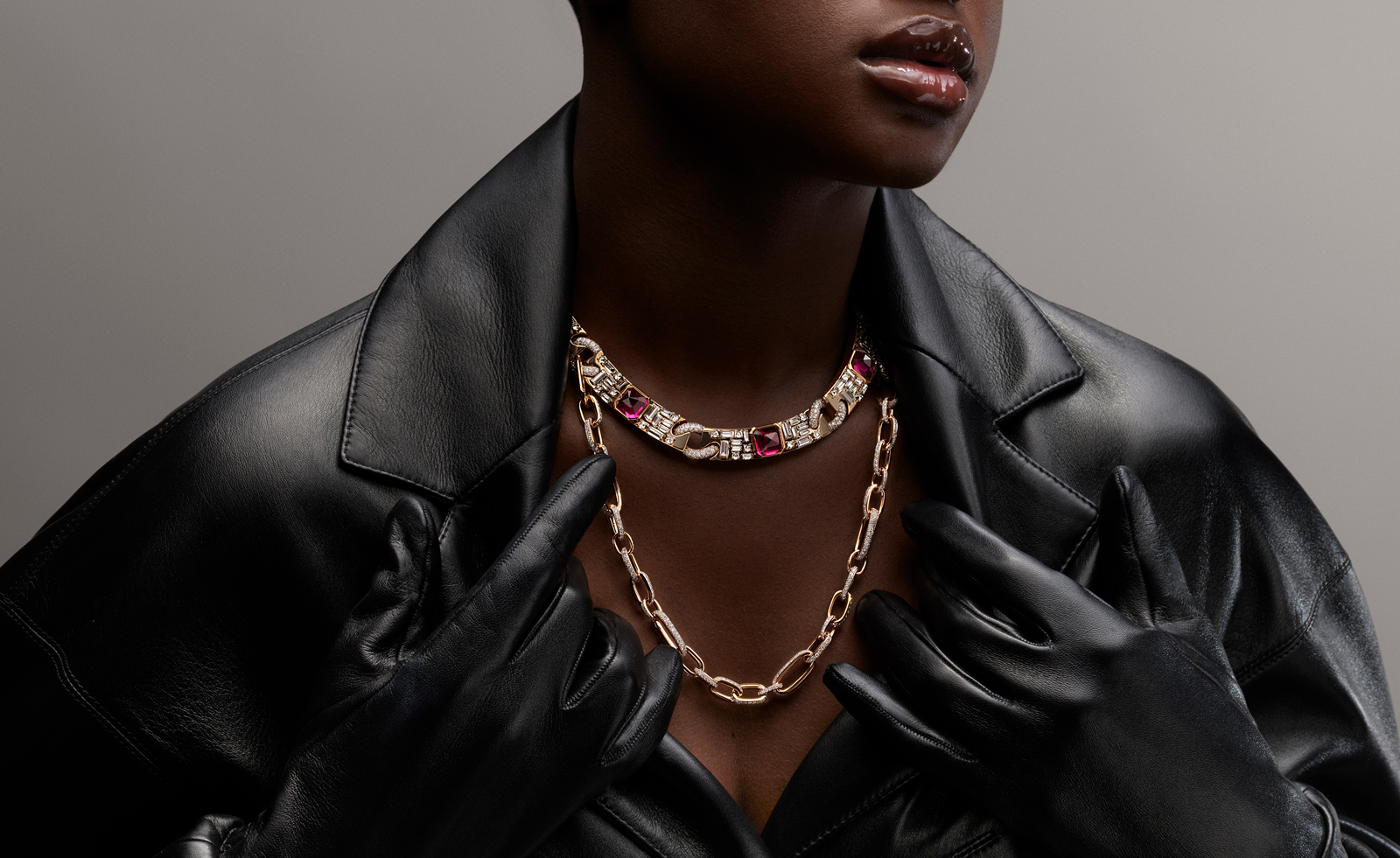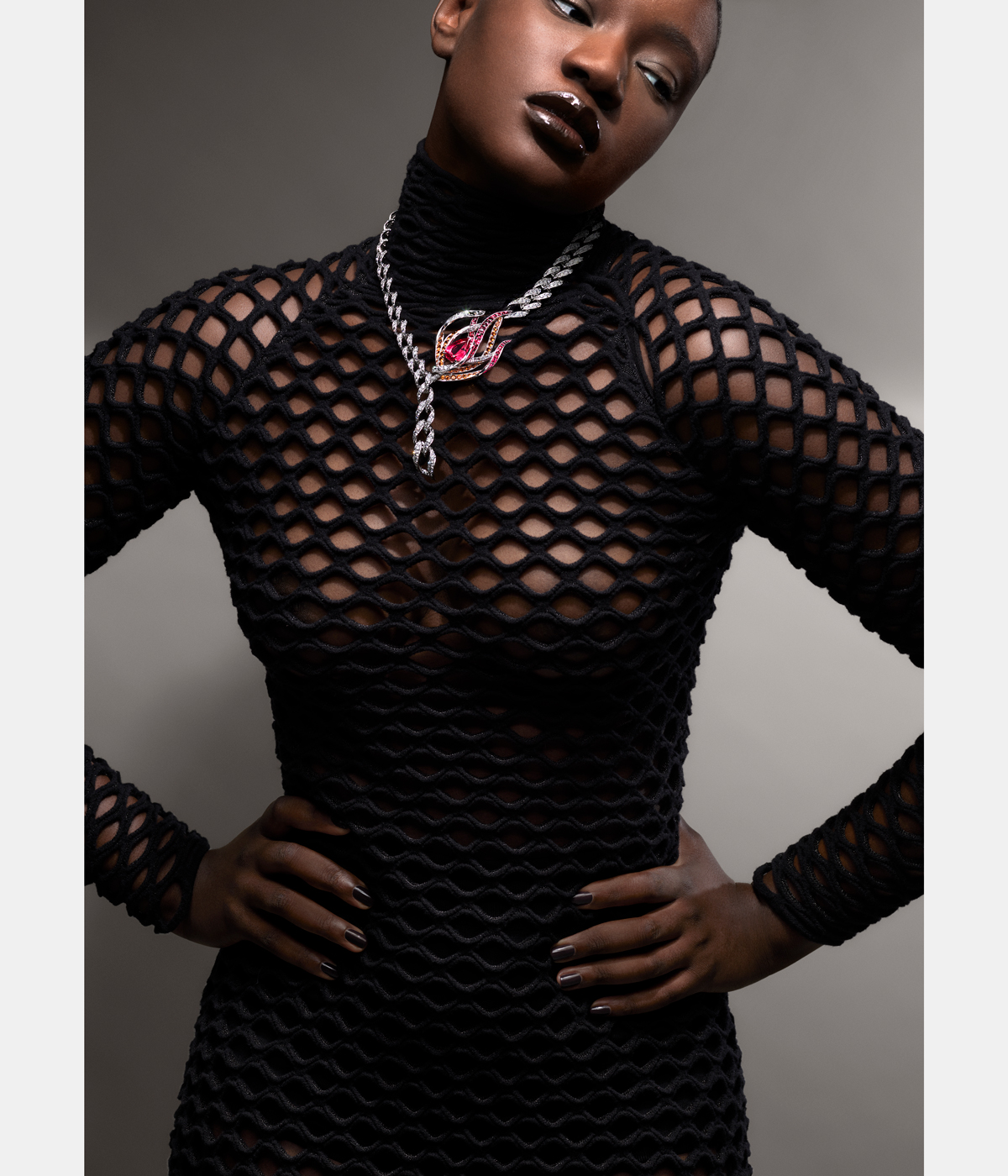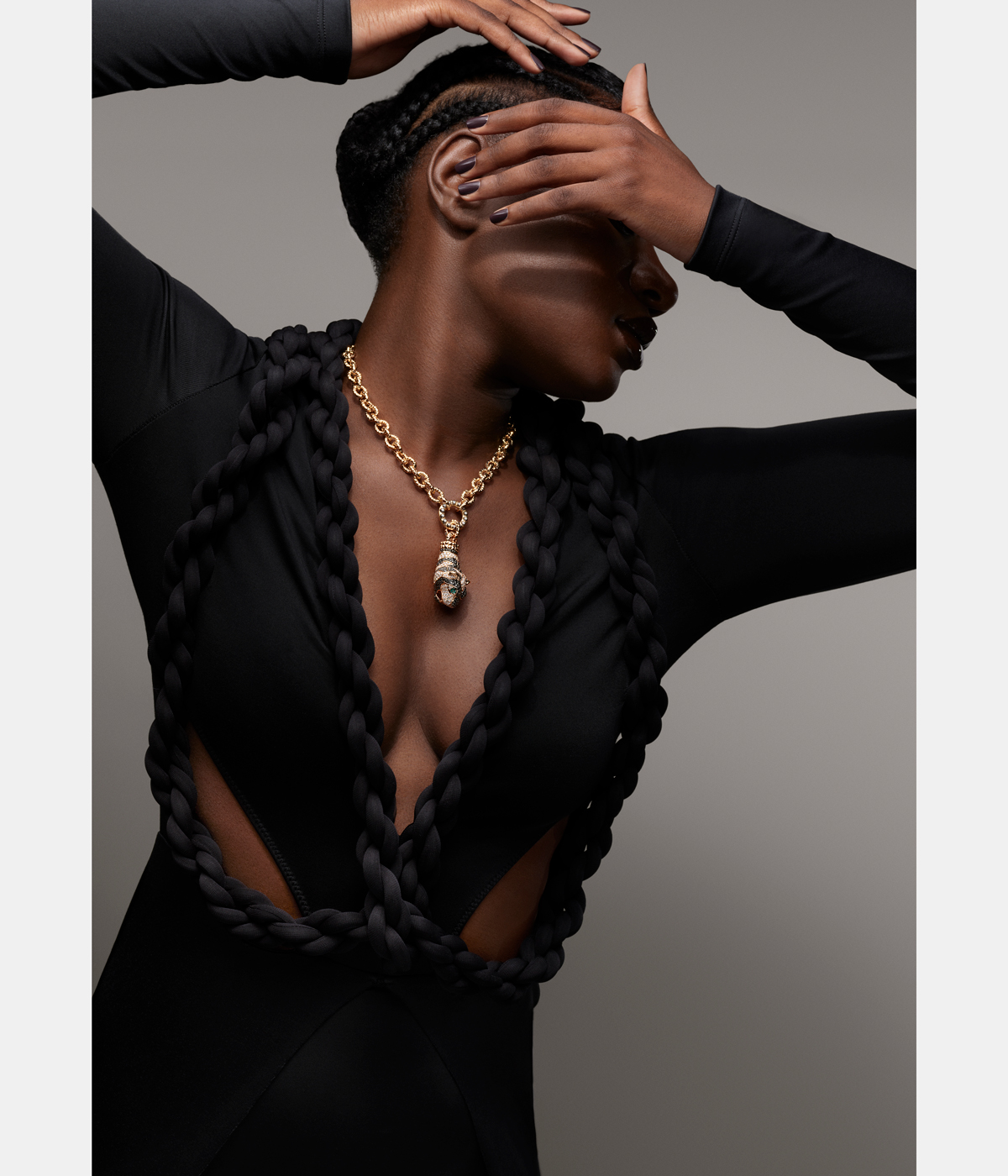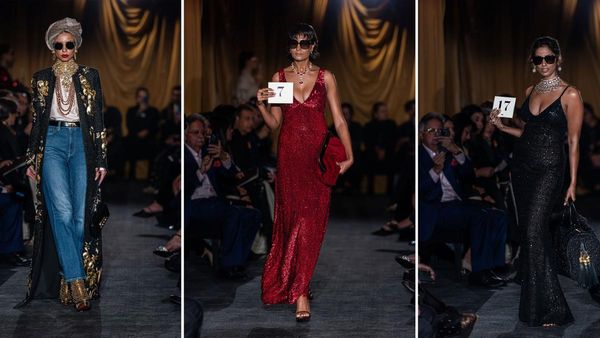
When chunky chains started dominating this year’s high jewellery collections, the electro-hop beats of Salt-N-Pepa’s 1987 hit Push It pumped around my brain for days. The musical connection also struck a chord with Ehssan Moazen, creative director of Chaumet, one of the oldest jewellery maisons on Paris’ Place Vendôme. ‘Our ‘Tulip’ necklace does have a hint of 1980s streetwear and a touch of punk to it,’ he says of the heavy diamond-set piece from this year’s Le Jardin de Chaumet collection.
Yet it’s rare for a jeweller whose business is seriously precious materials to create big, bold pieces that might be confused with street ‘bling’. After all, high jewellery is, by its very nature, designed to last. ‘Being recognised as a traditional house for our history, craftsmanship and the quality of our jewels is important – it’s in our DNA,’ says Moazen. ‘But it becomes a challenge if we only lean towards our past.’ As such, he sees the voluminous ‘Tulip’, with its off-centre 10.70ct Tanzanian red spinel, as Pomellato championed fashionable chains ‘the right inspiration to convey contrasting from the off, applying its fine, 18kt gold influences in a highly sophisticated way’.

If there was ever a moment for the exclusive world of high jewellery to embrace broader cultural inspirations, that time is now. Global high jewellery sales boomed throughout the pandemic, with the-then-necessary direct-to-client video calls now seen as a highly effective norm for some brands. Recent surveys expect the market for highly precious designs to grow exponentially by 2025, as clients bask in the exclusivity of one-off creations and the rarity of earth-born gemstones. Then there’s the overriding influence of today’s music megastars who prefer real diamonds and pearls to the comic, overblown street versions of yore.
For Milanese jewellery house Pomellato, it has always been thus. The house is not new to fashion, nor the chain game. But it is a newcomer to the high jewellery arena. Established in the Italian city in 1967, Pomellato championed fashionable chains from the off, applying its fine, 18kt gold flavour to the symbolic pendant designs preferred by the hippie movement. The sounds of the times have also played their part. In 1960s music subcultures, a swinging pendant or two spoke of a subversive, sensual power, particularly for men. As Pomellato’s creative director, Vincenzo Castaldo, says: ‘Our dialogue with fashion always makes its way into chain design – it becomes more rock ‘n’ roll and openly seductive.’
The starting point for the high jewellery Castello chain, a sensational addition to Pomellato’s latest high jewellery collection ‘Ode to Milan’, was a 1970’s choker from the archives. “It had this neo-medieval look reminiscent of the dominating architecture of the Castello Sforzesco,” Castaldo says. “We were looking to find a link between Milan’s history and Pomellato’s heritage, so we took its essence of power and invincibility and added a softer contrast with the stones” – five rubellites and 28 carats of diamonds, to be precise.
So far, so classic, but the addition of velvety rubellites and the sheer inventiveness of the Castello design – diamond-set angular baguette cuts on rose-gold plaques, linked by chunky diamond-set gourmette links – shows how Pomellato has appropriated the house motif as a playground for serious high-jewellery techniques.

The non-gender street appeal of chains was never lost on Alessandro Michele, Gucci’s former creative director, whose inventive high jewellery collections became quite pendant- focused. The emerald-eyed panther necklace wouldn’t have looked out of place on Neneh Cherry’s 1989 Raw Like Sushi album cover. The poppy hip-hop star stands defiant, dripping in urban-jeweller’s gold – pendant around neck, bangles stacked on wrist. “I was influenced by the idea of mixing the resilient and the classic, using urban street style with classic items,” Cherry told a newspaper at the time of the album’s re-release in 2020.
At Chaumet, Ehssan Moazen and his Paris team are also busy conflating the resilience of high-jewellery tradition with contemporary mores. The Tulipe design started as a chain, which, Loazen says, “simply became the extension of the abstracted tulip.” But there is a more philosophical bent to the story: “We liked the notion of a single concept coupled with an outstanding gemstone. Here, it is a feeling of ‘power’.”
The Chaumet Tulipe undoubtedly captures the style mood, but the high jewellery expression offers a level of sophistication and intricacy that, like any pop diva worth her gold-plated microphone, absolutely demands a double take.
A version of this story appears in the January 2024 Next Generation Issue of Wallpaper*, available in print, on the Wallpaper* app on Apple iOS, and to subscribers of Apple News +. Subscribe to Wallpaper* today!










